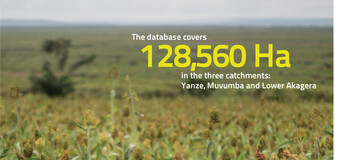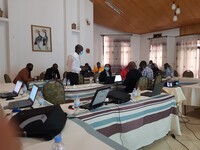A geospatial database for agricultural water use and productivity
KnoWat established a geospatial database based on the water monitoring tool developed for the Food and Agriculture Organization of the United Nation (FAO)’s Water Productivity through Open-access of Remotely sensed derived data (WaPOR) project.
The database was used to assess agricultural water consumption and water productivity in Rwanda by interpreting satellite images in the Yanze, Muvumba and Lower Akagera catchments.
The database includes eight years of data on the catchments (2015-2022) at 30 metres resolution. Data at 100 metres resolution is available for all of Rwanda. The data are freely available on FAO’s WaPOR portal.
Twenty experts from FAO’s partner institutions in Rwanda were trained to interpret WaPOR datasets produced for the project, such as water resource assessments and scheme-level information, including analyses of water productivity.
Expanding the application of remote sensing techniques
WaPOR’s remote sensing tool has been used by key institutions in Rwanda, including the Rwanda Water Resources Board (RWB), to support water resources planning and the development of irrigation projects. For example, WaPOR data on evapotranspiration was used as an input to the water balance for the natural capital accounts as well as hydrological assessments of selected watersheds. Remote sensing techniques are also used in the sustainable management of water resources, including runoff and hydrological modelling. In future, they may support flood and watershed management.
Reliable information on water productivity helps farmers to better manage water resources and increase agricultural production. The results of the KnoWat project provide us with important lessons on future applications of WaPOR for water productivity assessments in Rwanda. Additional capacity building and support, particularly on the application of WaPOR in water productivity assessments, could further strengthen the use of WaPOR at national, catchment and irrigation scheme leve


